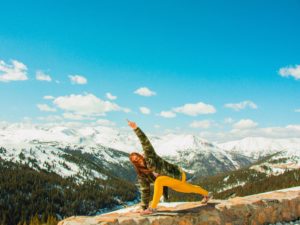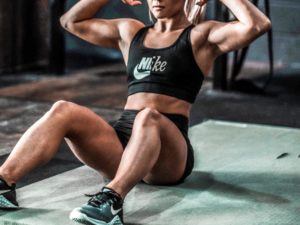Want more of a Core Workout? Try these 10 plank variations today
We all want inner strength, emotionally, mentally, and well, physically. A plank workout is just one aspect of wellbeing.

A strong core can help with a variety of things in life, improving posture, balance, and strength.
But planks, with their static position, are boring! All I can do during a plank is concentrate on how much I don’t want to be planking.
Let’s make it more fun, raise the stakes, and make planks more dynamic
Planking is already a great workout that involves almost all the muscles of the body and these variations will give you a more intense workout while keeping you entertained and focused!
What is a Basic Plank for the Core

Planking is a position in which you are holding the upper part of a push-up.
Start on your hands and knees, placing your hands directly below your shoulders. Stretch one leg out straight back, and then the other.
This is a high plank position or Full plank. Low plank positions, also called elbow planks, have the same posture, except you lower onto your elbows.
High plank positions tend to activate the arms and shoulders more, while a low plank position uses more core muscles. Both require many muscles in the body, including arms, shoulders, glutes, and thighs.
Plank Variations to try Today for Core Strength
If you want to get the most out of your workout, check out these plank variations for an extra burn!

Up Down Planks
Up down planks are just like the name sounds, you move from a high and low plank position. This movement strengthens the muscles of the chest, shoulders, and arms.
Start from a high plank position, with your hands directly under your shoulders, legs extended, the top of a push-up.
Next, place your elbow directly under your shoulder, your forearm extended and touching the mat. Next, place the other elbow and forearm down as well. You are now in a low plank position.
The next step is to place your hand on the ground, lifting one side of your torso up, and then the other to reach a high plank position once again.
Side Planks Core Workout
Side plank positions target the sides of your core, the obliques.
Lie on your side, with your legs extended, and stacked on top of one another. Place your forearm or hand on the ground below your shoulder and raise your bottom hip off the floor until your body creates a straight line. Repeat on the opposite side.
This can be done either in a high plank position, or low plank position.

Reach and Tuck Side Planks
Reach and tuck planks target the sides of your core, the obliques, as well as the arms, shoulders, and entire core.
Lie on your side, with your legs extended, and stacked on top of one another. Place your hand on the ground below your shoulder and raise your bottom hip off the floor until your body creates a straight line to be in a high side plank position.
Raise the arm not touching the floor up to the ceiling then slowly twist it under the space between your body and the floor. Twist back up to reach the ceiling.
Repeat on the opposite side.

Knee to Elbow
Knee to elbow planks activates the glutes, thighs, and core greatly! They are a good way to improve balance and total body strength.
From a high plank position, bend your knee and reach it to the opposite side, trying to reach your elbow. Make this movement slow, remembering to engage your core and glutes for balance and stability.
Place your knee back in the starting position and repeat on the other leg.
Side Knee to Shoulder
This knee to shoulder plank is similar to knee to elbow but targets the obliques more intently. From a high plank position, draw the knee on the same side, almost making a side crunch movement.
This can be done either in a high plank position, or low plank position.
Low Core Hip Dips
No this isn’t to get rid of hip dips (those are normal and natural!). Hip dip exercises target the entire core, particularly the obliques and can be great for the glutes. They help to improve stability and balance.
Start from a low plank position, and tilt your hips towards the ground on one side. Go back to a neutral low plank, then tilt towards the other side.
Walking plank
Walking planks are a total body workout, activating everything from the arms to the thighs.
Start in a high plank position. Slowly move to one side, raising your arm and leg and following with the side. Return to neutral plank before moving in the other direction.
This can also be done forwards and backward or even from a low plank position.
Shoulder Taps
Should taps are great for the shoulders and arms and truly work on balance and posture.
From a high plank, raise your arm to reach and touch your opposite shoulder, so that you are balancing on the feet and other arm. Slowly lower to the ground, returning to a basic high plank, before repeating on the other side.
Feet Taps
Feet tap plants work the thighs, arms and improve balance.
From a high plank position, reach your arm toward your feet, adjusting to almost be in a downwards dog position.
Repeat on the other side.

Alternate Arm Leg Extension
This plank variation is one of the most difficult, as it requires balance and activates the muscles on the arms, shoulders, abs, glutes, back, and thighs (so like, almost all of them.)
From a high plank position raise the right arm and left leg straight up as high as you can. Low to a neutral position, then repeat on the other side.
For a less balance-focused workout, raise one arm, then the other, then raise one leg, then the other.
Tips on a Plank Position Core Workout
Remember to keep the core tight and activated, as this can protect the muscles from damage, particularly the back,
Start with easier positions, then move on to more challenging ones when comfortable.
It’s ok to take breaks! Place your knees on the mat when need be.
Finish off your ab workout by stretching. Check out some yoga poses that help release tension such as a child’s pose.
The Takeaway
Planks are a great total body workout. They activate many parts of the body, including the arms, legs, core, shoulders, and glutes.
They can give you an even better workout by adding difficulty and variations.
Different plank positions and variations target different muscles for more intensity. Remember to listen to your body, pushing yourself but not hurting yourself.





